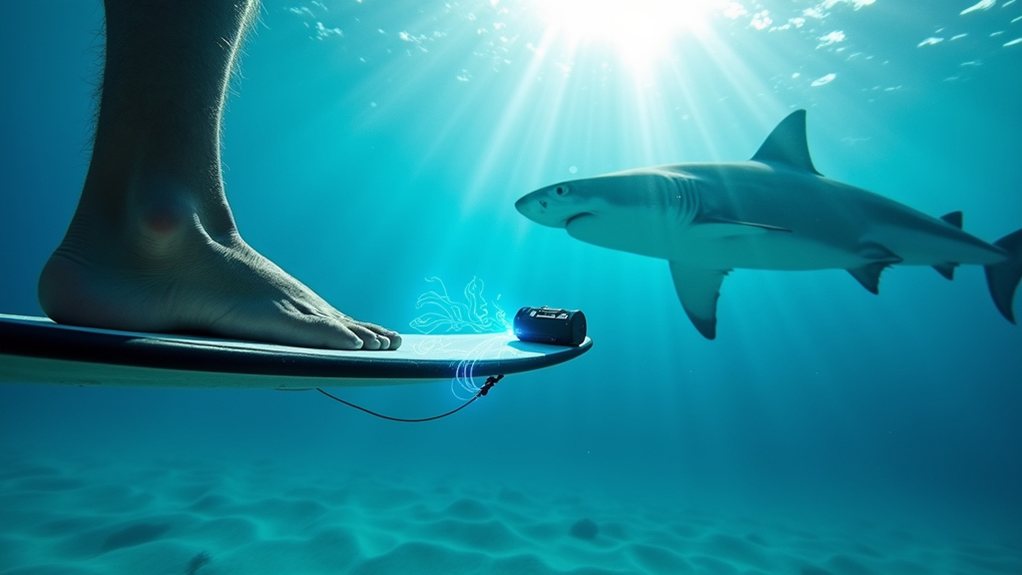Scientists have scrutinized shark repellent technology for decades, with results ranging from promising breakthroughs to complete failures. The ocean’s apex predators, with their remarkable electromagnetic sensing abilities, don’t always respond as manufacturers claim. While some products, like Freedom + Surf, have shown measurable success in controlled tests, others amount to little more than expensive talismans bobbing alongside anxious swimmers. The quest for reliable protection continues, but what’s happening beneath the surface might surprise you.
The Science Behind Shark Deterrents

How effective are those expensive devices strapped to surfers’ ankles when a two-ton predator with rows of serrated teeth comes calling? The answer isn’t as clear-cut as ocean enthusiasts might hope, with science revealing a mixed bag of results that could leave some swimmers feeling a bit exposed.
The Freedom + Surf currently stands as the market’s most effective personal shark repellent, greatly reducing shark encounters with both white and bull sharks. This electrical pulse-emitting device cuts the percentage of bait taken by sharks from a whopping 96% down to 40%, while also increasing the distance sharks maintain from potential meals. It works by disrupting the shark’s sophisticated electro-sensory system, fundamentally scrambling the predator’s natural GPS.
The Freedom + Surf scrambles a shark’s natural GPS, cutting bait attacks by more than half when apex predators come calling.
Not all shark deterrents are created equal, though. Products like Rpela and SharkBanz, which use magnetic fields to confuse sharks, have shown limited to no effect in controlled testing. These devices, often marketed with bold claims, frequently lack the rigorous scientific validation needed to back up their promises of protection. Studies show that ankle or wrist-worn ESDs typically don’t produce meaningful effectiveness against sharks due to their placement and limited electric field strength. Studies indicate these repellents are generally less effective against great whites, which unfortunately are one of the species most frequently involved in human encounters.
The science behind effective repellents targets the ampullae of Lorenzini, sensory organs sharks use to detect prey through electrical fields. Devices that successfully disrupt this system tend to perform better in tests, though none offers foolproof protection when you’re sharing the lineup with nature’s perfect predator. Just as travelers experience the “first-night effect” with heightened vigilance in new environments, sharks demonstrate a vigilant response when their sensory systems detect unfamiliar electrical stimuli. Environmental conditions can significantly impact how well a shark repellent performs in real-world situations.
Before dropping $500 on a deterrent, swimmers should keep in mind that shark attacks remain incredibly rare events, despite their outsized media coverage. The risk varies by location and species present, with great whites, bulls, and tigers responsible for most incidents.
Smart ocean-goers combine multiple safety strategies: avoiding dawn and dusk feeding times, staying away from seal colonies, and considering proven deterrents like Freedom + Surf for high-risk areas.
While technology continues to improve, there’s still no substitute for awareness when you’re playing in a wilderness that belongs to these ancient predators.






